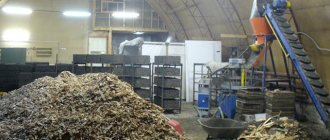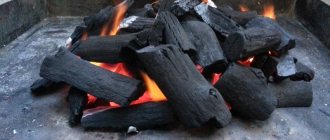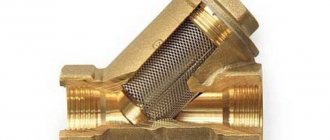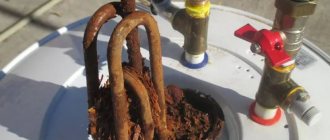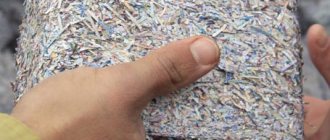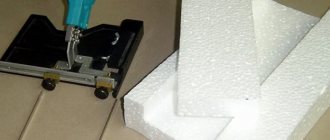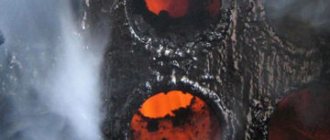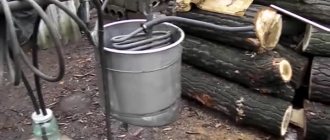Set of socks, Omsa socks
349 ₽ More details
Set of socks, Omsa socks
349 ₽ More details
Measuring tapes
On the building materials market there are products with a cellular structure, an example is penoizol. Not only professionals, but also ordinary people who have some experience create it with their own hands from scrap materials. This is an inexpensive raw material that requires the use of simple equipment. For this reason, this insulation has a low cost.
Features and description of the material
The material is a modified foam. Its main characteristics are:
- resistance to fire;
- good thermal insulation characteristics;
- installation by spraying.
Penoizol has good resistance to fire.
It is based on three components. This is orthophosphoric acid, urea resin and a substance with foaming properties. The specified ingredients are mixed in exact proportions and the device is installed. A mixture resembling jelly is formed. It has a white tint. Under the influence of compressed air, it moves outward. She:
- fills any space;
- ensures tightness;
- forms a lush foam after hardening.
Curing requires several steps. After application, the composition sets slowly. This takes approximately 15 minutes. After 3 hours the foam becomes a little hard. But this is not enough for it to fulfill its functions. The material takes its final form after 3 days.
In its finished form, it is not solid, but liquid penoizol that is formed. Some home craftsmen are trying to make it with their own hands, since it has good technical characteristics and is considered easy to manufacture. The material is elastic and easily restores its shape after any mechanical stress. It contains up to 90% air. Outwardly, it resembles expanded polystyrene, but differs from it in its fine cell structure.
The improved properties of penoizol have made it popular in the field of insulation of private houses. It is used in thermal insulation of complex structures, interfloor ceilings and floors.
Key varieties
There are different types of urea foam. All of them are suitable for thermal insulation of buildings.
- Liquid penoizol. Received the greatest distribution. It can be prepared directly on the construction site, which is why it is very convenient. The material is used for thermal insulation of various structures, as well as for repair purposes. Foam is poured into a confined space to form additional sound insulation in frame buildings. When it comes to repair work, penoizol in liquid form is used to fill cracks and gaps.
- Granular penoizol. It has several names: foam insulation crumb, thermal wool. It is available in the form of elastic granules. During manufacturing, the polymer is crushed into fractions up to 15 mm in size. The volume of the finished material after grinding doubles compared to the original amount. This is a good option to save on installation costs. Granular penoizol is used to fill the cavity between walls and for laying on the floor.
- Sheet foam insulation. The liquid material is poured into a special mold. After cooling, it is cut on special machines or simply by hand until it is given the required thickness. After this, they are dried and mechanically processed. The product is used to insulate buildings under construction. Installation is carried out with dowels from the outside of the walls. Decorative panels or siding are laid on top. In addition, the slabs are laid between the joists on the floor.
More information about the production of penoizol:
Penoizol can have different densities depending on the manufacturer. It varies on average from 6 to 35 kg per cubic meter.
Preparation of the State Housing Administration
To prepare you need:
- check the correct connections of the hoses to the components of the installation, the integrity of the electrical wiring;
- connect sources of compressed air and electricity to the installation;
- connect containers B2 and B3 to each other and connect to the GZHU according to the structural diagram directly to the suction fitting of the FOAM solution supply pump using flexible hoses with an internal diameter of 12 mm;
- container B1 with resin is connected to the installation directly to the suction fitting of the resin supply pump using a flexible hose with a diameter of 25 mm.
The height of the location of the drain fittings of containers B1-B3 relative to the FOAM and RESIN fittings of the installation must be at least 0.5 meters. Preparation of a 4% foaming agent solution:
- 0.1 liters of PO are consumed per 1 m3; if 20 cubic meters of penoizol are produced per shift, then it is necessary to prepare 2 liters of PO and dilute it with water 1:24 to obtain a 4% solution, i.e. 48 liters of water;
- A 4% solution of ABSA (PO) is prepared in hermetically sealed containers made of polyethylene or stainless steel;
- 2 liters of concentrated ABSA is diluted in 48 liters of hot water (70-80 °C) and stirred for 5-8 minutes. until a homogeneous transparent light brown liquid is obtained.
Preparation of foam solution:
- take 500 ml of phosphoric acid 85% concentration;
- pour 45 liters of water heated to 40 °C into a plastic container (50 l.);
- Pour KO into heated water and stir;
- Pour 5 liters into the prepared solution. the previously prepared 4% PO solution and mix thoroughly for several minutes.
The resulting FOAM solution is enough to produce 2 cubic meters. m. penoizol with a density of 15 kg/m3. Pouring foam into molds:
- pour RESIN and FOAM solutions into containers B1 and B2;
- open the tap for supplying the FOAM solution to the installation;
- open tap KP4 on the top panel of the installation for 2-3 minutes to allow the FOAM solution to flow into the working part of the electric pump H2.
The filling can be monitored visually through the transparent hose. Open the supply valve to the RESIN solution installation:
- open tap KR5 on the top panel of the installation for 2-3 minutes to allow the RESIN solution to flow into the working part of the electric pump H1, visually monitoring the filling.
- turn on both electric pumps for a short time (3-5 seconds) and make sure that they are working according to the readings of the pressure gauges (the “RESIN” pressure gauge should show more than 0.4 MPa (4 kgf/cm2), the “PENA” pressure gauge more than 0.3 MPa);
- After making sure that the pumps are working and the connections are tight, turn off the electric pumps;
- turn on the source of compressed air (compressor) and make sure that it flows through the air outlet from the outlet hose;
- turn on both pumps and start pouring the foam into the molds.
During short breaks in operation (up to 5 minutes), the installation can be stopped by turning off the electric pumps for supplying RESIN and FOAM solutions and stopping the air supply. It happens:
- in 10 minutes before finishing work, pour hot water (45-50 degrees Celsius) into container B3 for rinsing (at least 30 liters of hot water are required for rinsing);
- after making a decision to stop work, it is necessary to open the water supply tap KR3 to the installation;
- As soon as the water flows along the RESIN supply line, close the KR1 valve supplying the RESIN solution to the installation.
Rinse the resin line and outlet hose for 5-10 minutes. Then rinse the PENA line for 3-5 minutes. It is recommended to cut urea foam into slabs with a thickness of at least 4 cm and no more than 20 cm. The waste generated during cutting is placed in a separate container. After filling, the container is sent to dry. Cut foam slabs are placed on drying shelves and kept in the drying area for 2-3 days.
Dried waste is crushed in accordance with the Unipor crushed specifications. The crumbs are packaged in plastic bags for subsequent sale. In the finished products warehouse, finished foam boards and plastic bags with crumbs are stored until they are sold.
On video: Installation for the production of PENOIZOL
https://youtube.com/watch?v=UxY97KsmKgU
Technical indicators
Compared to traditional insulation, penoizol has many advantages. The main characteristics worthy of attention include:
- Thermal conductivity. The only low figure is 0.041 W/m/K. To ensure good performance, it is enough to lay a layer 10 cm thick.
- Soundproofing. Noise absorption is at a quite decent level. It is approximately 65%.
- Fire resistance. The flammability group to which penoizol belongs is designated G-1. Its flammability category is B-2. This indicates that it will not melt when exposed to fire. When high temperatures are reached, the material will begin to evaporate, without producing toxic substances. Under the condition of an open fire, 10 times less smoke is generated compared to polystyrene foam.
- Resistant to chemical components. The insulation does not react in any way to aggressive environments. This primarily applies to solvents of organic origin.
- Resistance to humidity. Penoizol has the ability to absorb moisture well, but it gives it away with equal success. The characteristics of the material are not affected. It is capable of absorbing up to 1/5 of moisture. Penoizol subsequently evaporates it. To prevent mold from forming on the wall, install a ventilation gap. The heat insulator absorbs approximately 20% of moisture throughout the day.
- Vapor permeability. The insulation in question is hygroscopic, and therefore allows the walls to breathe. Air circulates freely throughout the structure.
Disadvantages of the product
The main disadvantage of penoizol is that it produces sediment in the range of 0.1−5%. These indicators are better for the material that is between the walls under some pressure. Other disadvantages include:
- Low tensile strength. It's pretty easy to tear.
- Increased moisture absorption. In some situations this is a significant drawback. This feature prevents the use of this type of foam in the underground part of the foundation and when constructing a screed. It is necessary to lay additional waterproofing.
- The need to use special equipment. This is true for liquid forms of foam.
- Installation temperature requirements. It should be above +5°C. High-quality foam will only be obtained if this requirement is met. In addition, liquid urea foam can release phenol-formaldehyde during installation. This is possible if it contains low-quality resin.
Commercial benefit
Penoizol is a material that has found application in household and commercial areas equally. Low cost makes this business quite profitable. Insulation is sold in liquid form or as sheets. It really resembles regular foam.
Might be interesting
Thermal insulation
Insulating the ceiling in a bathhouse - methods, materials, useful...
Thermal insulation
Tables of comparative characteristics of thermal insulation…
Thermal insulation
Why polyurethane foam insulation is the best...
Thermal insulation
Self-adhesive thermal insulation: how to choose and apply?
Selection criteria and equipment purchase
In most cases, liquid penoizol is chosen when it comes to domestic use. It is applied using special equipment. You can rent it to save money.
To apply penoizol, a special installation is required; it can be rented in order to save
To produce penoizol with your own hands at home, you will need to equip the installation. You can arrange it from scrap materials. You will also need a compressor, molds for finished products, and additional equipment for lighting and ventilation. Budget installation options involve a combination of:
- gas-liquid equipment;
- supply hose;
- set of taps;
- plastic barrels;
- compressor.
Urea resins and catalyst are mixed in the plant. They are placed there using a pump. There is compressed air here. The main attention should be paid to the purchase of a pump, since it plays the role of a key element in production. Errors in dosage are especially important. A vortex or plunger pump is the most profitable and effective option. But in any case, foreign particles should not be allowed to get inside, as this will ruin the whole process.
More information about liquid foam:
Is it cheaper to order or do it yourself?
There is no need to buy professional equipment if the production result is used at only 1-2 sites. In this case, you can make the material yourself, or rent equipment. The average cost is 10 thousand rubles.
To achieve profitability, it is important to use as many distribution channels as possible from the very beginning. A convenient option is when purchasing a mobile unit. Thanks to it, it is convenient to work on any objects, in the garage and right at the construction site.
Penoizol is used for vapor barrier of a balcony or loggia
Sometimes the time to reach break-even increases due to the seasonality of some work, which is also taken into account. Just like the original lineup.
List of materials and manufacturing technologies
Penoizol is made from foamed urea resin. Its production is characterized by efficiency, affordable price and speed of work. To make it you will need:
- polymer resin;
- foaming agent;
- hardener;
- specially prepared water.
There are several methods for producing penoizol, according to which sheets and mats are produced. The raw materials are poured directly on the spot where the insulation work is being carried out. If the filling radius of the equipment is large, the material manufacturing process becomes efficient.
You can use gas-liquid units that are easy to use and low in cost. For the production of insulation, installations of the Standard and Pena 2000 types are suitable. The first is characterized by an original dosage system. There is also a second generation system with an increased range.
To produce penoizol you will need a special gas-liquid installation
What you need to get started
A penoizol manufacturing business can be started without major investment. The equipment is inexpensive, and the main expenses each month will be spent on purchasing raw materials and paying staff.
Table 1. The amount of initial costs for the penoizol production business.
| Expense item | price, rub. |
| Registration | 20 thousand |
| Premises for rent, 90 sq. m | 25 thousand |
| Equipment | 200 thousand |
| Raw materials (for a month at full load) | 230 thousand |
| Salary, 6 people. | 190 thousand |
| Additional expenses | 100 thousand |
| Total | 765 thousand |
The calculations are relevant for a city with a population of up to 1-1.5 million people. Additional costs include the costs of utility bills, advertising promotion, premises preparation, etc. The amount of tax deductions is not taken into account in the calculation.
Comparison with polyurethane foam
The two materials are often compared in terms of financial benefits and technical performance. Safety of use comes first in importance. Manufacturers claim that penoizol is neutral and safe for humans and animals. But at the same time, in a number of states in Canada and America there is a law according to which the use of urea foam for construction is prohibited. It is considered a potential health hazard.
This situation is also observed in some European countries. This is explained by the release of formaldehyde during the polymerization of liquid foam. You can reduce the likelihood of adverse effects by using a vapor barrier on the inside of the wall.
As for polyurethane foam, there are no bans on it in any country in the world. It has all the necessary quality and safety certificates.
In terms of water absorption, polyurethane foam has minimal indicators, since its structure is porous and closed. It retains heat well and is equipped with protection against corrosion, mold and mildew. The appearance of condensation is excluded here. Despite the positive properties of penoizol, excess moisture can lead to its destruction. This can be avoided by installing moisture insulation.
Better to buy new units
It is better not to purchase installations that are not new. This is largely due to the wear and tear of the equipment, which affects the quality of the resulting material. In addition, not a single seller will tell the truth about the condition of the installation, since this can hit his pocket very hard. Thus, you may face numerous problems after purchasing a used device. In this regard, it is worth considering purchasing new equipment.
Use in winter
Work in winter is difficult, as problems are created due to low air temperatures. This factor adversely affects the structural composition of penoizol. Approximately 50% of the resin consists of water. For this reason, the viscosity of the material increases. Despite all these unfavorable aspects, penoizol can be poured under certain conditions. Its components must be stored in a warm room at a temperature of at least +15°C, for example in a garage.
The installation must also be placed in a warm place. You can install the cheapest tourist tent for this. The materials must be compactly rolled up, covered with a layer of plastic film, and then the fan heater installed. Before starting work, it is necessary to heat the solution to +40°C, and the resin to +20°C. For this, a regular boiler is used.
More information about do-it-yourself penozol:
If all these rules are followed, you can get penoizol that is no different from the material installed under normal conditions. It is unacceptable to keep it at a temperature below +15°C, as it does not dry well. The moisture it contains will freeze. It will fulfill its role as a heat insulator only with the onset of spring. Moisture that does not freeze in the spring will evaporate by itself. Dry foam will remain unchanged.
Insulation of building envelopes is an important part of the design of a residential building.
Walls are no exception, because they account for 25-30% of the total heat loss of a building.
To achieve the maximum positive effect from work on thermal insulation of a room, it is necessary to choose a high-quality material that has an optimal set of positive properties.
The choice may consist of materials such as:
One of the excellent options may be foam insulation insulation, which we will talk about in more detail in this article.
Scope of application
Penoizol is suitable for insulation and sound insulation of all types of building structures and elements. It is used for elements such as:
- floors and ceilings;
- walls, including frame walls;
- roofs and rafter systems;
- basement floors, foundations and blind areas.
Insulation of roofs with foam insulation
Sprayed foam insulation is perfect for correcting mistakes made at previous stages of construction. It can isolate the so-called. “cold bridges” through which intense heat leaks from heated rooms occur.
In addition to construction, the material is also popular in the production and thermal insulation of refrigeration equipment - from household models to industrial installations.
Separately, it is worth mentioning the use of penoizol as sound insulation in buildings located near highways or in noisy industries. A 50 mm layer of penoizol allows you to reduce the noise level several times and create more comfortable conditions for your stay.
Penoizol is used both for residential premises and for insulating domestic and outbuildings: garages, bathhouses, sheds for keeping farm animals, cellars.
A somewhat unusual area of application for penoizol is firefighting: foam is used to extinguish chemically active substances and energized installations. The sprayed material blocks the access of air and prevents further combustion.
How to choose the required insulation option?
Modern technologies in the field of construction make it possible to carry out thermal insulation work in 2 ways:
Insulating the wall from the outside
Pros:
- All work is carried out outside the living space, thereby not reducing its usable area .
- Additional layers of vapor and waterproofing completely limit the access of moisture to wall structures, preventing the development of fungal infections.
- A wall insulated on the outside loses heat 6 times slower than one insulated on the inside.
- Thanks to the external thermal insulation layer, the load-bearing wall element warms up and remains warm on both sides. The zero temperature point is outside the wall .
- Thermal insulation also plays the role of a soundproofing cushion.
Minuses:
- Difficulty in installation . In addition, if the building is multi-story, then the help of industrial climbers will be required.
- During insulation, the appearance of the building facade will change.
- Installation work can only be carried out under certain weather conditions (no precipitation, air temperature above +5 degrees )
Comparison of insulation methods
Internal insulation of wall structures
Pros:
- Internal insulation work can be carried out at any time of the year .
- This option for insulating the room will be more economical, since all the work can be done independently.
- You can insulate a separate room , not the entire building.
Minuses:
- Reduces the internal area of the room.
- The wall elements do not warm up completely, which prevents them from accumulating heat.
- During operation, condensation may form between the wall and the thermal insulation layer . Dampness is an excellent environment for the development of mold and mildew.
- A layer of insulation will make it problematic to attach shelves and other hanging elements to the wall.
- Heat loss through wall structures remains at 10-15%.
Advantages and disadvantages of penoizol
Penoizol is a lightweight urea-formaldehyde foam that belongs to a class of organic materials.
It is used both for heat and sound insulation of premises, and for insulation of the soil base.
It has been present on the building materials market not so long ago, and therefore is not as widely known as its analogues.
Let's look at its positive and negative qualities.
Advantages of penoizol:
- As mentioned earlier, it is not only a heat-insulating, but also a noise-absorbing material;
- Penoizol, unlike many insulation materials, is not eaten by rodents ;
- The material is resistant to rotting;
- When exposed to high temperatures, it does not ignite , melt or smoke;
- Is a breathable thermal insulation material;
- Penoizol has a fluid structure and hardens only on the insulated surface when interacting with air. This makes it possible to achieve high-quality insulation of complex wall structures, since it fills even the smallest gaps and cracks;
- There is no limitation on service life;
- Foam insulation thermal insulation can be reinforced. This can be achieved by introducing mineral additives into the base material;
- The price of the material is relatively low.
Flaws:
- Gives high shrinkage;
- Difficulty in carrying out installation work. The use of foam insulation requires certain knowledge and experience in working with the material , since application requires strict adherence to technology.
- When insulating frame structures, it is difficult to predict how such thermal insulation will behave. When hardening, penoizol shrinks, which may result in the appearance of huge voids , which will be difficult to fill.
- The material is fragile, so it must be sheathed with other materials that have greater mechanical strength.
Documentation
First you need to register your activity form. You can work as an individual (IP) or legal entity (LLC). It all depends on the plans of the entrepreneur and the scale of production. Each form has its own capabilities and limitations, but working in the LLC form will allow you to cooperate even with large construction companies and wholesale and retail chains.
When registering, OKVED-2 codes are indicated.
23.99.6 “Production of mineral heat- and sound-insulating materials and products.”
22.23 “Production of plastic products used in construction.”
22.29 “Production of other plastic products.”
32.9 “Production of products not included in other groups.”
To start a business project, you do not need certification. The polymer is produced according to TU 2254-001-33000727-99 “Heat-insulating foam insulation. Technical conditions".
Specifications
To obtain a qualitative assessment of the properties of this material, it is necessary to evaluate its technical indicators. These include:
- Operating temperature range – from -50 to +120 degrees;
- Material density – 5-75 kg/m3;
- Daily water absorption by mass – 10.5-20%;
- Thermal conductivity – 0.028 –0.047 (W/m) *°C;
- Humidity (mass fraction) – 5-20%;
- The standard service life is 50 years. According to recent studies, it is not limited.
Tensile strength:
- For bending deformations – 0.1-0.25 kg/cm. sq.;
- For compression (at 10% linear deformation) – 0.07-0.5 kg/cm. sq.;
- Tensile – 0.05-0.08 kg/sq.cm;
Equipment necessary for self-insulation
To carry out installation work on insulating the premises, you will need the following mechanisms and equipment:
- Compressor;
- Foam generator;
- Pumps (for supplying solution and for supplying foam);
- Source of electricity;
- Additional fastening and formwork elements;
- Special protection (gloves, glasses, respirator).
Equipment for applying thermal insulation
Lathing for foam insulation thermal insulation
To ensure normal bonding of penoizol to the wall structure, it is necessary to construct a metal or wooden sheathing . If you choose a wooden option, you will need additional treatment of the frame elements with special antiseptics.
Sequence of installation of the sheathing structure:
- Mark the areas on the facade where the main elements of the sheathing will be attached to the wall;
- Drill holes for fasteners in the designated locations;
- Fill the holes with cement or gypsum mortar, and then, using a hammer, drive wooden plugs into them;
- Install the vertical elements of the sheathing and secure them using self-tapping screws (on clogged wooden plugs). The pitch of the guide bars is up to 1 m.
When using penoizol, there is no need to install film vapor or waterproofing . It will not allow the insulation to dry out, and the wall will not be able to breathe.
Horizontal elements are installed on vertical bars in increments of about 0.5 m.
You can start applying penoizol. Since this is a liquid material, an additional element of the lathing structure will be required - a restrictive mesh . It is attached to a frame with insulation to ensure the necessary fixation of the penoizol until it dries completely.
The last step is to install the finishing trim on the already insulated surface. In the same way, you can carry out internal thermal insulation of the room. In this case, plasterboard is used as a finishing material.
Just above we looked at the method of external insulation with foam insulation using a sheathing structure. Let's consider other options for insulating structures.
Interwall thermal insulation
It can be used both for a building under construction and for an already operating building that has voids between the outer and inner walls . In the first case, injection is carried out directly into the open cavity of the wall.
For an existing building, the insulation process is carried out as follows:
- In the seams of the outer wall, you need to drill holes (in a checkerboard pattern) equal in size to the hose of the pressure equipment being installed;
- Pumping equipment hoses are installed in the holes located at the very bottom
- Next, the foam insulation mixture is supplied under pressure into the interwall space;
- After penoizol appears in the holes of the next tier (in height), the supply of the mixture is stopped and they move to the row above.
- The lower holes are sealed with plugs to prevent insulation from leaking out;
- The sequence of work is repeated until complete thermal insulation of the wall structure is ensured.
Who should you sell the finished products to?
3 main groups of consumers of urea foam:
- construction companies, repair and construction companies;
- retail stores and wholesale and retail networks for the sale of construction products, construction markets;
- private individuals.
At the initial stage, it is important to use all possible sales channels - it is necessary to attract the attention of potential buyers to the new product. However, the most convenient option is to obtain a contract for large supplies of insulation. Therefore, great attention must be paid to negotiations with construction companies.
The penoizol production business is seasonal. Construction is actively carried out during the warm season. Of course, large construction projects are carried out in winter, but in general the volume of construction work drops noticeably in cold weather.
Thermal insulation of the facade with cladding slabs
The work is being carried out as follows:
- The required number of slab and profile elements for the entire façade surface is calculated;
- Galvanized steel profiles are attached to the facade of the building using dowels (wooden plugs) and self-tapping screws
- Magnesite slabs are installed and secured to a steel frame;
- Holes are drilled in the constructed casing in a checkerboard pattern;
- Using specialized pumping equipment, liquid penoizol is pumped into the holes. The order of filling voids is from bottom to top ;
- Upon completion of thermal insulation work, the holes are sealed;
- At the final stage, decorative finishing of the facade begins , which can be done using plaster and painting compounds.
Thermal insulation under siding
If desired, magnesite boards can be replaced with another sheet finishing material.
Insulation with penoizol is a rather labor-intensive process. However, given its excellent thermal insulation performance, as well as its low price, it can and should be used for home insulation with your own hands.
Staff
To service the production, you need to hire 3 people, one of whom will be a senior person in the workshop. The latter’s responsibilities include coordinating the rest of the workers, monitoring their activity and training. It is the senior worker who needs to be sent for an internship to the equipment seller.
To organize sales, you will need a sales manager. He will meet and negotiate supplies with representatives of construction and wholesale and retail companies.
A driver is needed to deliver raw materials to the factory and finished goods to customers.
The accountant will handle the document flow and prepare papers for the tax authorities. It is better to hire one through outsourcing (by contacting an accounting firm).

